 |
King of Chemicals Manufacturers |
Specifications, Properties, Uses, SDS of Ethylcellulose Dispersion Type B USP NF Grade and Ethylcellulose Powder Manufacturer Supplier Exporter Wholesale & Small Packs, CAS Number 9004-57-3. |
|
| King of Chemicals has several associated companies having accreditations like cGMP, GLP - FDA Approved Good Manufacturing Practice and Good Laboratory Practice of WHO standard, ISO-9001, ISO-14001, ISO/IEC 17025, ISO ISO-45000, HACCP, FSSC 220000, FSSAI, "REACH" Registered, Kosher & Halal Certified. e-CTD and DMF support can be made available if needed. We offer USP NF BP Ph Eur EP IP JP Analytical Reagent FCC Food Grade Chemicals & Nutraceuticals. | |
        |
|
Muby Chem Pvt. Ltd. is a several decades old group of companies, engaged in manufacturing, supplying, distributing, wholesale supplies of bbbbb for actual users, including retail or small pack supplies for research and development work.
We supply fine and speciality chemicals, pharmaceutical excipients, mineral fortifiers in chemically pure, analytical reagent grade, IP BP USP Ph Eur EP JP and other pharmaceutical grade monograph including FCC Food grade chemicals and Nutraceuticals at best prices. We and/or our associated units have all the facilities to supply as per cGMP standard observing good manufacturing practice and good laboratory practice. We can assure low microbial count and also offer a test certificate for the same. We maintain warehouses across USA, India, and UAE. Our group exports to USA, Canada, Mexico, Argentina, Brazil, Chile, Korea, Malaysia, Thailand, Indonesia, Europe, and several other parts of the world. We supply in wholesale container loads to small pack of few grams. Solid products may be specified for it size and shape as desired by the buyer.


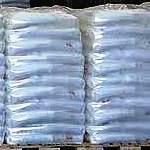
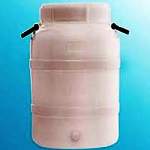
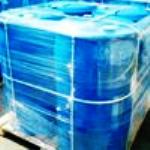
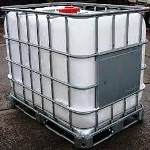
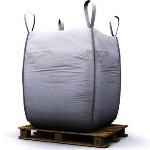
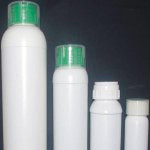

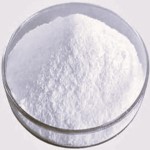
Ethylcellulose Dispersion Type B and Ethylcellulose Powder CAS Number 9004-57-3
For Properties Specifications Uses of Ethylcellulose Dispersion Type B and Ethylcellulose Powder Click Properties, Specifications, Uses, Price, Process of Ethylcellulose Dispersion Type B and Ethylcellulose Powder Manufacturer.
For For SDS MSDS Sheet of Ethylcellulose Dispersion Type B and Ethylcellulose Powder Click SDS Safety Data Sheet MSDS Sheet of Ethylcellulose Dispersion Type B and Ethylcellulose Powder Manufacturer.
The Properties, Specifications, Monograph and Uses of Ethylcellulose Dispersion Type B and Ethylcellulose Powder:
Ethylcellulose Dispersion Type B USP NF Grade Specifications:
DEFINITION
A stabilized dispersion of ethylcellulose in water. It contains NLT 90.0% and NMT 110.0% of the labeled amount of Ethylcellulose. It may contain suitable amounts of plasticizers, stabilizers, and glidants.
IDENTIFICATION
A. Film Formation
Analysis: Transfer an appropriate quantity of Ethylcellulose Dispersion Type B to a clear glass plate, distribute evenly, and place in a laboratory oven at about 60C until dry. [Note— It may take less than 60 min.]
Acceptance criteria: A continuous transparent or translucent film is formed.
B. Infrared Absorption
Analysis: Use the film prepared in Identification test A and perform Infrared Absorption.
Standard spectrum: Perform Infrared Absorption using USP Ethylcellulose RS.
Acceptance criteria: The IR absorption spectrum of the film so formed in the 3600–2600 cm-1 and 1500–800 cm-1 regions exhibit maxima corresponding to the same wave numbers as the Standard spectrum.
C. The retention time of the ethylcellulose peak of the Sample solution corresponds to that of the Standard solution, as obtained in the Assay. [Note— Plasticizer and/or stabilizer peaks may be present in the chromatogram.]
Content of Oleic Acid: To pass the test by chromatography.
Content of Dibutyl Sebacate and Oleic Acid: To pass the test by chromatography.
Residue on Ignition: NMT 1.95%.
[Note— Perform this test only if Ethylcellulose Dispersion Type B contains inorganic nonvolatile material.]
Procedure 1: Limit of Glycerin: To pass the test by chromatography.
[Note— Perform this test only if Ethylcellulose Dispersion Type B contains glycerides.]
Procedure 2: Limit of 1-Butanol: To pass the test by chromatography.
[Note— Perform this test only if Ethylcellulose Dispersion Type B contains butyl esters.]
pH: 9.5–11.5
Total Solids: 23.0%–26.0%
Viscosity - Rotational Methods: 400–1500 mPa.s.
Storage: Preserve in tight containers at a temperature below 25C. Protect from freezing.
Specifications of Ethylcellulose USP NF Grade:
Cellulose, ethyl ether;
Cellulose ethyl ether --- CAS 9004-57-3
DEFINITION
Ethylcellulose is a partly O-ethylated cellulose. It contains NLT 44.0% and NMT 51.0% of ethoxy (– OC2H5 ) groups, calculated on the dried basis.
IDENTIFICATION
A. Infrared Absorption.
ASSAY
To pass the test by chromatography.
Acceptance criteria: 44.0%–51.0% on the dried basis.
Residue on Ignition:
Sample: 1.0 g
Acceptance criteria: NMT 0.5%
Chlorides: To pass the test. ---
Acceptance criteria: After standing for 5 min protected from light, any opalescence in the Sample solution is not more intense than that in the Standard solution (0.1%).
Acetaldehyde: To pass the test. ---
Viscosity—Capillary Methods:
Solution A: Alcohol and toluene (1:4 w/w)
Sample solution: Shake a quantity of Ethylcellulose, equivalent to 5.00 g of the dried substance, with 95 g of Solution A until the substance is dissolved.
Analysis: Determine the viscosity using a capillary viscometer.
Acceptance criteria: The viscosity (mPa·s) determined at 25° is NLT 80.0% and NMT 120.0% of that stated on the label for a nominal viscosity greater than 6 mPa·s; and NLT 75.0% and NMT 140.0% of that stated on the label for a nominal viscosity of NMT 6 mPa·s.
Acidity or Alkalinity:
Solution A: Dissolve 100 mg of phenolphthalein in 80 mL of alcohol, and dilute with water to 100 mL.
Solution B: Dilute 50 mg of methyl red with 1.86 mL of 0.1 N sodium hydroxide and 50 mL of alcohol, and dilute with water to 100 mL.
Sample solution: To 0.5 g of Ethylcellulose add 25 mL of carbon dioxide-free water, and shake for 15 min. Pass through a sintered-glass filter with a maximum diameter of pores between 16 and 40 µm.
Analysis: To 10 mL of Sample solution add 0.1 mL of Solution A and 0.5 mL of 0.01 N sodium hydroxide (Solution C). To 10 mL of Sample solution add 0.1 mL of Solution B and 0.5 mL of 0.01 N hydrochloric acid (Solution D).
Acceptance criteria: Solution C is pink; Solution D is red.
Loss on Drying:
Sample: 1 g
Analysis: Dry at 105C for 2 h.
Acceptance criteria: It loses NMT 3.0% of its weight.
Packaging and Storage: Preserve in well-closed containers.
Labeling: Label it to indicate its nominal viscosity in mPa·s for a 5% m/m solution.
The MSDS-SDS Hazard Statement of Ethylcellulose Dispersion Type B and Ethylcellulose Powder:
Ethylcellulose Dispersion Type B
SDS GHS, Safety Data Sheet
MSDS Sheet, Material Safety Data Sheet 27-March-25
Section 1: Chemical Product and Company Identification
Product Name & Other Names: Ethylcellulose Dispersion Type B
CAS Number: 9004-57-3 for the active ingredient. (Balance is water).
EINECS EC Code: -
Relevant uses and uses advised against (if any): Industrial Manufacturing.
Section 2: Hazards Identification
GHS, Globally Harmonized System Classification in accordance with 29 CFR 1910
Hazard Class and Category Code(s), Regulation (EC) No 1272/2008 (CLP)
Not a hazardous substance or mixture according to Regulation (EC) No. 1272/2008.
This substance is not classified as dangerous according to Directive 67/548/EEC.
Labeling Regulation as per GHS & EC 1272/2008 (CLP) & GHS
GHS Label Elements NONE |
Signal Word: None
Precautionary statements:
P261: Avoid breathing dust/fume/gas/mist/vapors/spray.
P262: Do not get in eyes, on skin, or on clothing.
P281: Use personal protective equipment as required.
P302+P352: IF ON SKIN: Wash with plenty of soap and water.
P303+P361+P353: IF ON SKIN (or hair): Remove/Take off immediately all contaminated clothing. Rinse skin with water/shower.
P304+P340: IF INHALED: Remove victim to fresh air and keep at rest in a position comfortable for breathing.
P305+P351+P338: IF IN EYES: Rinse cautiously with water for several minutes. Remove contact lenses, if present and easy to do. Continue rinsing.
P337+313: If eye irritation persists get medical advice/attention.
Section 3: Composition and Information on Ingredients
Product Name & Other Names: Ethylcellulose Dispersion Type B
CAS Number: 9004-57-3 for the active ingredient.
Section 4: First Aid Measures
Always seek medical advice after the first aid treatment.
Skin: Rinse with water. Soap may be used. Seek Medical Aid.
Eyes: Wash eyes with plenty of water for at least 15 minutes, lifting lids occasionally. Seek Medical Aid.
Inhalation: Remove to fresh air. If not breathing, give artificial respiration. If breathing is difficult, give oxygen.
Ingestion: If swallowed, induce vomiting immediately after giving two glasses of water. Never give anything by mouth to an unconscious person.
Section 5: Fire and Explosion Data
Products of Combustion: Oxides of Carbon.
Fire Fighting Media and Instructions: Use water spray, alcohol-resistant foam, dry chemical, or carbon dioxide. Wear self-contained breathing apparatus for firefighting if necessary.
Special Information: In the event of a fire, wear full protective clothing and NIOSH-approved self-contained breathing apparatus with full face piece operated in the pressure demand or other positive pressure mode. At high temperatures under fire conditions, it may produce toxic or irritating fumes.
Section 6: Accidental Release Measures
Personal precautions, protective equipment, and emergency procedures: Avoid breathing dust/fumes/gas/mist/vapors/spray. Ensure adequate ventilation. Use individual protective equipment (waterproof boots, suitable protective clothing, safety glasses, etc.). Restrict unprotected personnel from the area.
Environmental precautions: Do not let the product enter drains, soil, or water sources.
Methods and materials used for containment cleanup procedures and Storage:
Contain spilled material. Do not inhale vapors, mist, or gas. Avoid dust formation. Use a shovel to put the material into a convenient waste disposal container.
Section 7: Handling and Storage
Precautions for safe handling: Apply according to good manufacturing and industrial hygiene practices. Ensure proper ventilation. Wash thoroughly after handling. Do not drink, eat, or smoke while handling. Avoid contact with skin, eyes, and clothing. Minimize dust generation. Avoid breathing dust/fumes/gas/mist/vapors/spray. Keep container tightly closed. Avoid ingestion and inhalation. Use individual protective equipment (waterproof boots, suitable protective clothing, safety glasses, etc.). Prevent any contact with hot surfaces.
Conditions for safe storage, including any incompatibilities: Store in cool, dry, and ventilated area away from heat sources and protected from sunlight in tightly closed original container. Keep air contact to a minimum. Do not leave the material container open. Store protected from heat, sparks and ignition sources and incompatible materials. Avoid contact with skin and eyes. Avoid inhalation of dust/mist/vapor. Do not store with incompatible materials like oxidizing agents and acids.
Section 8: Exposure Controls/Personal Protection
Exposure Guidelines: This product does not contain any hazardous materials with occupational exposure limits established by the region-specific regulatory bodies.
Engineering Controls: Use process enclosures, local exhaust ventilation, or other engineering controls to keep airborne levels below recommended exposure limits. If user operations generate dust, fume, or mist, use ventilation to keep exposure to airborne contaminants low.
Ventilation System: A system of local and/or general exhaust is recommended to keep employee exposures as low as possible. Local exhaust ventilation is generally preferred because it can control the emissions of the contaminant at its source, preventing dispersion of it into the general work area.
Personal Respirators (NIOSH Approved): For conditions of use where exposure to dust or mist is apparent and engineering controls are not feasible, a particulate respirator may be worn. For emergencies or instances where the exposure levels are not known, use a full-face positive-pressure, air-supplied respirator.
Skin Protection: Wear protective gloves and clean body-covering clothing.
Eye Protection: Use chemical safety goggles and/or full-face shield where dusting or splashing of solutions is possible. Maintain eye wash fountain and quick-drench facilities in work area.
Other Control Measures: Maintain good housekeeping in work area. Handle in accordance with good industrial hygiene and safety practice. Wash hands after handling.
Section 9: Physical and Chemical Properties
Physical state and appearance: White Aqueous Suspension.
Odor: None.
Odor threshold: Not available.
pH: 9.5–11.5
Relative density: No data found.
Melting point/freezing point: No data found.
Initial boiling point and boiling range: No data found.
Flash point: No data found.
Auto-ignition temperature: No data found.
Decomposition temperature: No data found.
Upper/lower flammability or explosive limits: No data found.
Vapor pressure: No data found.
Vapor density: No data found.
Evaporation rate: No data found.
Flammability (solid, gas): No data found.
Partition coefficient: n-octanol/water: No data found.
Solubility: Practically insoluble in water.
Viscosity: Rotational Methods: 400–1500 mPa.s.
Section 10: Stability and Reactivity Data
Stability: It is stable in room temperature in closed containers under normal storage & handling.
Conditions of instability: Incompatible materials, Strong oxidizers.
Incompatibility with various substances: Avoid high temperatures, sparks, open flames, and moisture. Avoid contact with strong oxidizing agents.
Polymerization: Will not occur.
Section 11: Toxicological Information
LD50 Oral - Rat: > 5000 mg/kg
LD50 Dermal – Rabbit: > 5000 mg/kg
Carcinogenic Effects: Not a reported carcinogen by IARC, NTP, ACGIH, OSHA.
Reproductive toxicity: No data found.
Teratogenicity: No data found.
Developmental Effects: No data found.
Section 12: Ecological Information
Toxicity to fish: No data found.
Persistence and Degradability: Insoluble in water
Bioaccumulation/ Accumulation: No data found.
Mobility: Is not likely mobile in the environment due its low water solubility.
Section 13: Disposal Considerations
Waste Disposal: Waste must be disposed of in accordance with federal, state, and local environmental control regulations.
Section 14: Transport Information
DOT USA & ADR/RID Europe: Not Controlled.
IMDG: Not Controlled.
IATA: Not Controlled.
Section 15: Other Regulatory Information
USA Regulations:
SARA 311/312 Hazard Categories: No SARA hazards
California Prop 65: California Not listed.
Section 16 - Additional Information
Disclaimer:
**************************
Our company provides this MSDS sheet in good faith but makes no representation as to its comprehensiveness or accuracy. This SDS sheet is intended only as a guide to the appropriate precautionary handling of the material by a properly trained person using this product. The above information has been compiled from various sources and has the possibility of discrepancy and being out-dated information. Individuals receiving the information must exercise their independent judgment and do further search in determining its appropriateness for a particular purpose. In no case shall our company be liable to loss or damages by the product user.
**************************
Ethyl cellulose SDS GHS, Safety Data Sheet
MSDS Sheet, Material Safety Data Sheet 27-March-25
Section 1: Chemical Product and Company Identification
Product Name & Other Names: Ethyl cellulose
CAS Number: 9004-57-3
EINECS EC Code: -
Recommended usage: Industrial Manufacturing.
Section 2: Hazards Identification
GHS, Globally Harmonized System Classification in accordance with 29 CFR 1910
Hazard Class and Category Code(s), Regulation (EC) No 1272/2008 (CLP)
Not a hazardous substance or mixture according to Regulation (EC) No. 1272/2008.
This substance is not classified as dangerous according to Directive 67/548/EEC.
Labeling Regulation as per GHS & EC 1272/2008 (CLP) & GHS
GHS Label Elements NONE |
Signal Word: None
Precautionary statements:
P261: Avoid breathing dust/fume/gas/mist/vapors/spray.
P262: Do not get in eyes, on skin, or on clothing.
P281: Use personal protective equipment as required.
P302+P352: IF ON SKIN: Wash with plenty of soap and water.
P304+P340: IF INHALED: Remove victim to fresh air and keep at rest in a position comfortable for breathing.
P305+P351+P338: IF IN EYES: Rinse cautiously with water for several minutes. Remove contact lenses, if present and easy to do. Continue rinsing.
P337+313: If eye irritation persists get medical advice/attention.
Section 3: Composition and Information on Ingredients
Product Name & Other Names: Ethyl cellulose
CAS Number: 9004-57-3
Section 4: First Aid Measures
Always seek medical advice after the first aid treatment.
Skin: Rinse with water. Soap may be used. Seek Medical Aid.
Eyes: Wash eyes with plenty of water for at least 15 minutes, lifting lids occasionally. Seek Medical Aid.
Inhalation: Remove to fresh air. If not breathing, give artificial respiration. If breathing is difficult, give oxygen.
Ingestion: If swallowed, induce vomiting immediately after giving two glasses of water. Never give anything by mouth to an unconscious person.
Section 5: Fire and Explosion Data
Products of Combustion: Oxides of Carbon.
Fire Fighting Media and Instructions: Use water spray, alcohol-resistant foam, dry chemical, or carbon dioxide. Wear self-contained breathing apparatus for firefighting if necessary.
Special Information: In the event of a fire, wear full protective clothing and NIOSH-approved self-contained breathing apparatus with full face piece operated in the pressure demand or other positive pressure mode. At high temperatures under fire conditions, it may produce toxic or irritating fumes.
Section 6: Accidental Release Measures
Personal precautions, protective equipment and emergency procedures: Avoid breathing dust/fumes/gas/mist/vapors/spray. Ensure adequate ventilation. Use individual protective equipment (waterproof boots, suitable protective clothing, safety glasses, etc.). Restrict unprotected personnel from the area. Prevent any contact with hot surfaces. Do not approach facing the wind. Do not touch the spilled material.
Environmental precautions: Do not let the product enter drains, soil or water sources.
Methods and materials used for containment Cleanup procedures and Storage:
Contain spilled material. Do not inhale vapors, mist, or gas. Avoid dust formation. Use a shovel to put the material into a convenient waste disposal container. Finish cleaning by spreading water on the contaminated surface and allow to evacuate as per law.
Section 7: Handling and Storage
Precautions for safe handling: Apply according to good manufacturing and industrial hygiene practices. Ensure proper ventilation. Wash thoroughly after handling. Do not drink, eat or smoke while handling. Avoid contact with skin, eyes and clothing. Minimize dust generation. Avoid breathing dust/fumes/gas/mist/vapors/spray. Avoid contact with eyes, skin, and clothing. Keep container tightly closed. Avoid ingestion and inhalation. Use individual protective equipment (waterproof boots, suitable protective clothing, safety glasses, etc.). Prevent any contact with hot surfaces.
Conditions for safe storage, including any incompatibilities: Store in cool, dry and ventilated area away from heat sources and protected from sunlight in tightly closed original container. Keep air contact to a minimum. Do not leave the material container open. Store protected from heat, sparks and ignition sources and incompatible materials. Avoid contact with skin and eyes. Avoid inhalation of dust/mist/vapor. Do not store with incompatible materials like oxidizing agents, acids.
Section 8: Exposure Controls/Personal Protection
Exposure Guidelines: This product does not contain any hazardous materials with occupational exposure limits established by the region-specific regulatory bodies.
Engineering Controls: Use process enclosures, local exhaust ventilation, or other engineering controls to keep airborne levels below recommended exposure limits. If user operations generate dust, fume or mist, use ventilation to keep exposure to airborne contaminants low.
Ventilation System: A system of local and/or general exhaust is recommended to keep employee exposures as low as possible. Local exhaust ventilation is generally preferred because it can control the emissions of the contaminant at its source, preventing dispersion of it into the general work area.
Personal Respirators (NIOSH Approved): For conditions of use where exposure to dust or mist is apparent and engineering controls are not feasible, a particulate respirator may be worn.
Skin Protection: Wear protective gloves and clean body-covering clothing.
Eye Protection: Use chemical safety goggles and/or full face shield where dusting or splashing of solutions is possible. Maintain eye wash fountain and quick-drench facilities in work area.
Other Control Measures: Maintain good housekeeping in work area. Handle in accordance with good industrial hygiene and safety practice. Wash hands after handling.
Section 9: Physical and Chemical Properties
Physical state and appearance: White or yellowish-white powder or granular powder.
Odor: None.
Odor threshold: Not available.
pH: Neutral to litmus (1 % colloidal solution).
Relative density: around 1.14
Melting point/freezing point: No data found.
Initial boiling point and boiling range: No data found.
Flash point: No data found.
Auto-ignition temperature: No data found.
Decomposition temperature: No data found.
Upper/lower flammability or explosive limits: No data found.
Vapor pressure: No data found.
Vapor density: No data found.
Evaporation rate: No data found.
Flammability (solid, gas): No data found.
Partition coefficient: n-octanol/water: No data found.
Solubility: Practically insoluble in water, in glycerol and in propane-1,2-diol but soluble in varying proportions in certain organic solvents depending upon the ethoxyl content.
Viscosity: Not available.
Section 10: Stability and Reactivity Data
Stability: It is stable in room temperature in closed containers under normal storage & handling.
Conditions of instability: Incompatible materials, Strong oxidizers.
Incompatibility with various substances: Avoid high temperatures, sparks, open flames and moisture. Avoid contact with strong oxidizing agents.
Polymerization: Will not occur.
Section 11: Toxicological Information
LD50 Oral - Rat: > 5000 mg/kg
LD50 Dermal – Rabbit: > 5000 mg/kg
Carcinogenic Effects: Not a reported carcinogen by IARC, NTP, ACGIH, OSHA.
Reproductive toxicity: No data found.
Teratogenicity: No data found.
Developmental Effects: No data found.
Section 12: Ecological Information
Toxicity to fish: No data found.
Persistence and Degradability: Insoluble in water
Bioaccumulation/ Accumulation: No data found.
Mobility: Is not likely mobile in the environment due its low water solubility.
Section 13: Disposal Considerations
Waste Disposal: Waste must be disposed of in accordance with federal, state and local environmental control regulations.
Section 14: Transport Information
DOT USA & ADR/RID Europe: Not controlled.
IMDG: Not controlled.
IATA: Not controlled.
Section 15: Other Regulatory Information
USA Regulations:
SARA 313: No SARA hazards
SARA 311/312 Hazard Categories: Not applicable
California Prop 65: Not listed.
Disclaimer:
**************************
Our company provides this MSDS sheet in good faith but makes no representation as to its comprehensiveness or accuracy. This SDS sheet is intended only as a guide to the appropriate precautionary handling of the material by a properly trained person using this product. The above information has been compiled from various sources and has the possibility of discrepancy and being out-dated information. Individuals receiving the information must exercise their independent judgment and do further search in determining its appropriateness for a particular purpose. In no case shall our company be liable to loss or damages by the product user.
**************************

Ethylcellulose Dispersion Type B and Ethylcellulose Powder Manufacturers, Suppliers, Exporters, Wholesalers:
King of Chemicals manufacturers

Plot No. 2900/46&47 + 2900/163to167, GIDC, Ankleshwar, Dist. Bharuch, India
India, USA, UAE
TEL: (Office) 91-22-23774610, 91-22-23723564
e-mail: info@kingofchemicals.com
Copyright and Usual Disclaimer is Applicable --- March 27, 2025
If I give you “My Word” Nobody can undo it.
If I sign an “Agreement” my Lawyer will undo it
Our products are for industrial and laboratory use only. The user must test the material before use. We are not dispensing chemists or druggist and do not offer over the counter type (OTC) products for medical use by individuals.
We and our associates manufacture pure chemicals surpassing Monograph Specifications of Analytical Reagent Standards, British & European Pharmacopoeia BP Ph Eur EP Standard, US Pharmacopoeia USP NF Standard, Indian Pharmacopoeia IP Standard, Japan Pharmacopoeia JP Standard, FCC Food Grade Standard. |
|